Week 1: READING: Through the Looking Glass Philosophical Toys and Digital Visual Effects
Annotated Bibliography
Prince, S. (2010) Through the Looking Glass: Philosophical Toys and Digital Visual Effects. Projections, 4(2), pp. 19-40.
Stephen Prince uses in his is article the keyword of perceptual realism as the perfect combination between art and science getting as a result what we commonly known as special effects. The professor from Virginia Tech and author of numerous books begins is articles with the evolution of art and science. Although how they worked together, to created digital effects and indexical images.
The author talked about the philosophical toys and how these objects introduce perceptual realism to the viewers, instilling more curiosity to the viewers. Thus, filmmakers were capable of impress those people in the past creating more and more enthusiasm about what all we know now as special effects.
They were called toys because they created the illusion of movement when they are simple images rotating together in a cycle. Thanks to technology we could copy this type of illusion, creating movement from simple frames, objects that were once there and are no longer there, like in Zodiac, The Hobbit or Jurassic Park
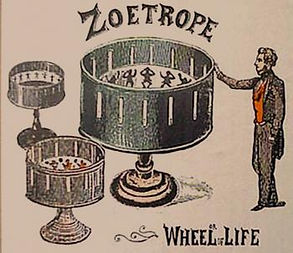

Picture from the set of Jurassic Park with the animatronic T- Rex

Picture from the set of The Hobbit from the rotoscoping session of Smaug by Benedict Cumberbatch
Week 2: Digital Storytelling Chapter 3: I’m sorry Dave, I’m afraid I can’t do that: The technology of DVFx.
Annotated Bibliography
McClean, S. (2008) Digital storytelling: the narrative power of visual effects in film. Cambridge, Massachusetts: The MIT Press.
Human inventiveness has reached the point of creating things that look real in films playing with the viewer's mind, this process has followed a diverse path to be where is today. Thanks to computers we have created this imaginary CG, that every day looks more real, cause all of the artists are working behind these DVFx. The purpose for these digital effects was to remove brands from the frames, or sometimes just integrated them in the frame. Time has changed for the filmmakers. They have to be grateful to visual compositors that in the case of the lord of the rings with the motion capture or the virtual camera techniques made some of the shots for the film look real.
Other examples as Fight club with the open since or Panic Room with the virtual camera moving through the house, making the viewers feel that is the real camera, it is made this DVFx work the perfect mix with the narrative, because is accepted by the audience. The most important things to make these DVFx and the classical Narrative work are origins, vision, time, frame object, and mind. No matters what with DVFx we are the ones imagining what else, where else, and who else we would choose to be.
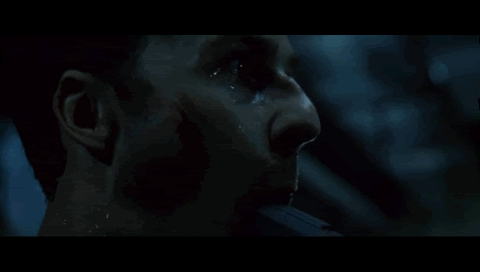
Fight Club

Panic Room
Week 3: The cinema of attractions: Early films, It’s the Spectator and the Avant-Garde. Tom Gunning.
Annotated Bibliography
Gunning, T. (2006) 'The Cinema of Attractions: Early Film, Its Spectator and the Avant-Garde', in Strauven, W. (1.) The Cinema of Attractions Reloaded. Amsterdam: Amsterdam University Press, pp. 381-388.
Tom Gunning and the matter of making the images seen, this the avant-garde. He was studying the ability of some filmmakers to impress the spectator, using the narrative and the mix of some magical tricks, like putting firecrackers under the seats (Einsentein). The viewers were impressed or attracted in many different ways, with eroticism or magical tricks (magical attraction).
These methods were the most used by the filmmakers between 1906 and 1913. The equation to make this work was, Spetacle + Narrative= Fulled classical cinema. The Avant-garde.
The earlies narrative was following the theater model, in the other side the spectacle was following the tricks, or what we will call today, Special Effects.
A crucial rethinking of film form and reception in its first decade, arguing that early cinema was spectacular rather than narrative, organized around the presentation of startling, theatrical “attractions” rather than the seamless verisimilitude that came to dominate with the rise of classical Hollywood narrative.Gunning argued that ‘tricks’ largely disappeared from cinema between 1907–13 as narrativisation became dominant.
The Great Train Robbery & Battleship Potemkin.
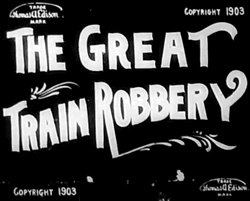
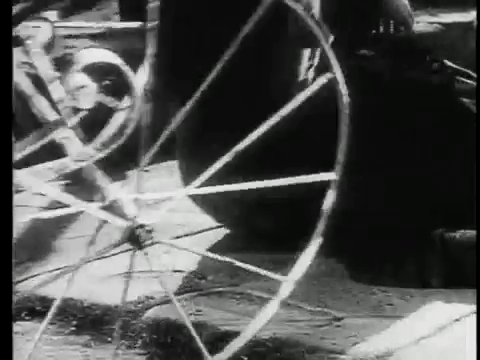
A gif from Battleship Potemkin
Manovich, L. (2001) 'Digital Cinema' , The Language of New Media. Cambridge MA: MIT Press.
Annotated Bibliography
Manovich, L. (2001) 'Digital Cinema' ,The Language of New Media. Cambridge MA: MIT press.
Manovich describes the evolution of cinema and the techniques to create movies as a process where images were hand-painted and hand-animated, where now in the twentieth century the entered movie could be just computer-generated. Software and hardware are replacing traditional film technology.
Apple in 1991 released Quick Time software that makes it possible to play movies on a computer. Although this technology was not useful until a few years later, with the improvement of CD-Room, to store information.
We had seen this evolution in CDs in video games, Video Clips, where they were stored, each year capable of store more and more information. All this has an influence on the development of Digital Cinema.
To summarize, how digital cinema is composed, is the perfect workflow of live-action material + painting + image processing + compositing + 2-D computer animation + 3-D computer animation. Turn of the century when cinema came to dominate the modern moving image culture are now
again, beginning to be explored.

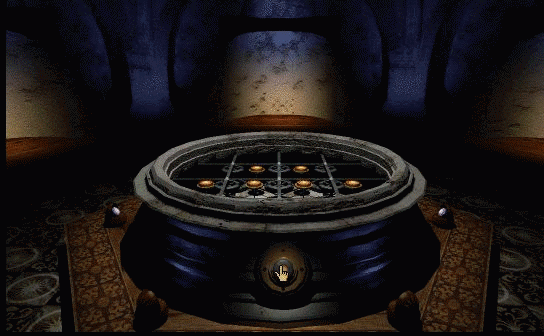
Bestseller CD-Room
Myst (Broderbund, 1993)
Week 3: Comparation of Lev-Manovich and Stephen Prince's
Similarities like the use of philosophical toys as examples of frames animation hand-animation, frame animation, were used in both essays. The illusion of movement created by the hand made toys like the zoetrope. On the other hand, we can see the difference between the two authors is that Stephen talks about the perfect combination of Science and Art when Lev said that computer-generated has changed classical cinema and the ways are created.
Week 3: Tom Gunning, books related to cinema and computer-generated.

Approximately he has worked in one hundred publications, in one specific talk about the genre in Hollywood cinema and the relation between cinema and technology, in the special effects.

Lev-Manovich

Tom Gunning

Stephen Prince's

Week 4: The Code (2011) Episode: Shapes, Du Satoy and the interviews PIXARS Loren Carpenter.
Annotated Bibliography
'Shapes' (2011) The Code, Series 1, Episode 3, Box of Broadcasts, at: https://learningonscreen.ac.uk/ondemand/index.php/prog/01E00B35?bcast=68266791 (Accessed 24 October 2020).
The universe is interconnected by the symmetry and geometry of everything around us, even us. A universal language does exist, and it can be seen in all the micro-universes, even the ones we may not be aware of. The bees are a clear example of this, in fact, they build and act following mathematical rules, ending up creating and living in a geometrical governed environment. Take a bubble, its shape, the way some bubbles communicate and bond with each other, creating a perfect geometrical shape, following symmetrical rules. Atomic symmetry is the building blocks of nature, everything is connected in a geometrical way.
It is a belief that even in the chaos we can find the singularity of perfection, as in Jackson Pollock art. The mathematical theory of fractal rules seems to suit perfectly Pollock’s paintings, which at first sight you may think do not follow any rules. With a deeper examination, we can find that the complexity of his works is simply based on repletion. This complexity builds our world, the rule is that simple as tree growth and divide, same shape, similar form. This pattern repeats from nature, art, chaos, and also in computer-generated images.
In the interview of Loren Carpeter, a computer scientific how was working for an aircraft company, who discover the algorithm of copied and repeat with triangular animations, using the shape of a triangle, adding more and more till you can see the shape of it, and you have created a better image, a better shape, a better look of your computer-generated animation.
These rules and theories were discovered by the Greeks thousands of years ago.
This is the perfection of nature.

Du Satoy

Loren Carpeter
Co-confunder of Pixar
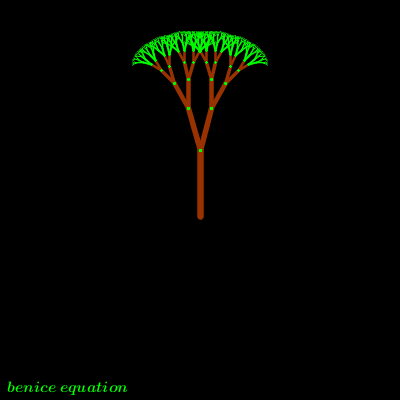


Copy and repeatt
A Landscape made using fractals
Week 5: The Uncanny Valley in games and animation by Angela Timwell & The Uncanny Valley By Mashiro Mori.
Annotated Bibliography
Tinwell, A. (2014) 'Digital Cinema' ,The Uncanny Valley in games and animation. London: CRC Press.
Warburton, A. (2017) Goodbye Uncanny Valley. Available at: https://alanwarburton.co.uk/goodbye-uncanny-valley (Accessed 06 November 2020).
In the introduction of Angela’s book, we have seen a clear representation of what means uncanny for the consumer of videogames and animations in general. They felt that their main character is more or less uncanny depending on the character's behavior and appearance. This character is judged on aspects such as movement, behavior, sound and context, and the relationship between all of these factors. She makes the example with the videogame Heavy Rain and the character Mary Smith’s, the fact this character is described as dull, been caught for the viewers as uncanny because the speech and the facial expression were not enough realistic. On the other hand, she mentions The last of us, a masterpiece having crossed the uncanny valley, from that year, where the player experimented with the gameplay with many realistic characters, the way they move, talk, and behaved were realistic enough for the player.
FMV≠ Full Motion Video.
Timwell said that the main point of the book is to identify visual and auditory stimulus features that currently affect uncanniness in virtual characters, based on perceived lack. Perhaps she demonstrated that increasing realism in the character does not always imply increased acceptance on the part of the viewers.
Uncanny is synonymous with the horror genre. Angela also observed that sometimes this uncanny character look uncannier because the artist has something to represent in them like an unsocial behavior or psychopathy, cold personality.
Adding extra information like lips better synchronized with the speech is less uncanny or be uncannier when there was a lack of human- likeness in the character’s facial expression, particularly in the upper region.
RHI≠ Robot Human Interaction.
HCI≠ Human-Computer Interaction.
The uncanny valley was first hypothesized in Japan by the roboticist Mashorio Mori, the defined this in the affinity of the robot, the movement of a robot in this case, and the design of the robot, where you would found or not the appearance of a human bean.

Mashorio Mori

Angela Tinwell

Graphic by Mashorio


Path of VFx by Alan Warburton
Week 7: Inside VFX An Insider's View Into The Visual Effects And Film Business by Pierre Grage.
Grange, P. (2014) Inside VFX: An Insider's View Into The Visual Effects And Film Business. South Carolina. CreateSpace
Inside VFX Businesses, is an insider’s view into de visual effects and film business, where Pierre supports this information basing on his own experience. I have chosen chapter 9 after reading the entire book because it is the one that looks more interesting, it is called: The visual Effects Roller Coaster. In this episode, he talks about the biggest companies in the Visual effects industry in the past 40 years and how some of these companies were found bankrupt after a couple of years, the reason for this is new technology advanced, bad management that he insisted that is one of the key points for VFX industry to change, the subsidies, and the government politics about taxies. Nerve the less that blockbuster's recipe has changed since the first couple of movies that explode in the box office like terminator 2, Jaw, Star Wars.
ILM Lucas films company is one of the still 6 biggest companies in the Visual Effects industry that still, but other companies like Digital Domain and Rhythm & Hues after winning many Oscars they were found themselves without any money, this is the case with R&H with The Life of Pi.


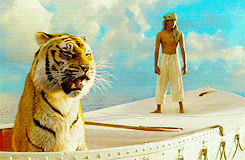

Life Of Pi

Week 8: Twelve Principles of Animation (The illusion of Life, Disney Animation, Frank Thomas & Ollie Johnston.
Johnson, O. and Thomas, F. (1981) The Illusion of Life. New York: Disney Editions.
The 12 principles of animation are well known by every 2D & 3D artist, these principles are based on the essentials feelings and meanings that the most simple animation have to transmit to the viewers.
The 12:
1.Squash and Stretch: the illusion of weight and volume to the character as it moves.
2.Anticipation: Prepare the viewers for a major action, the character is about to perform, each major action is predicted with specific moves that anticipate for the viewers what is about to happen.
3.Staging: Is the presentation of an idea so that's clear.
4.Straight ahead action and pose to pose: (Pose to pose) target with the key drawings that interpose through apposite. Straight ahead animation, starts at the first drawing and work drawing to drawing to end of the scene.
5.Follow through and overlapping action: When the main body of the character stops all the others parts continue to catch up with the main mask. nothing stops all of once.
6.Slow in and slow out: As the action starts we have more drawings near to the starting pose one or two on the middle and more drawings near to the next pose. Few drawings make the action faster, and the more drawings make the action slower.
7.Arcs: All actions with few exceptions follow an arc or slightly circular path. Arcs give animation more natural action and better flow.
8.Secondary action: It is ad additional action in the scene, used as a supplement in order to reinforce and add dimension.
9.Timing: More drawings between poses slow and smooth the action, few drawings make the action faster and crisper. Timing maintaining of an object hidden by the laws of physics.
10.Exaggeration: Remain true reality just present it in a while or move extreme form.
11.Solid drawing: It means taking into account form 3-dimensional space, give them volume and weight.
12.Appeal: Is a quality of charm able to pleal the viewers eyes, is the charisma of the action.
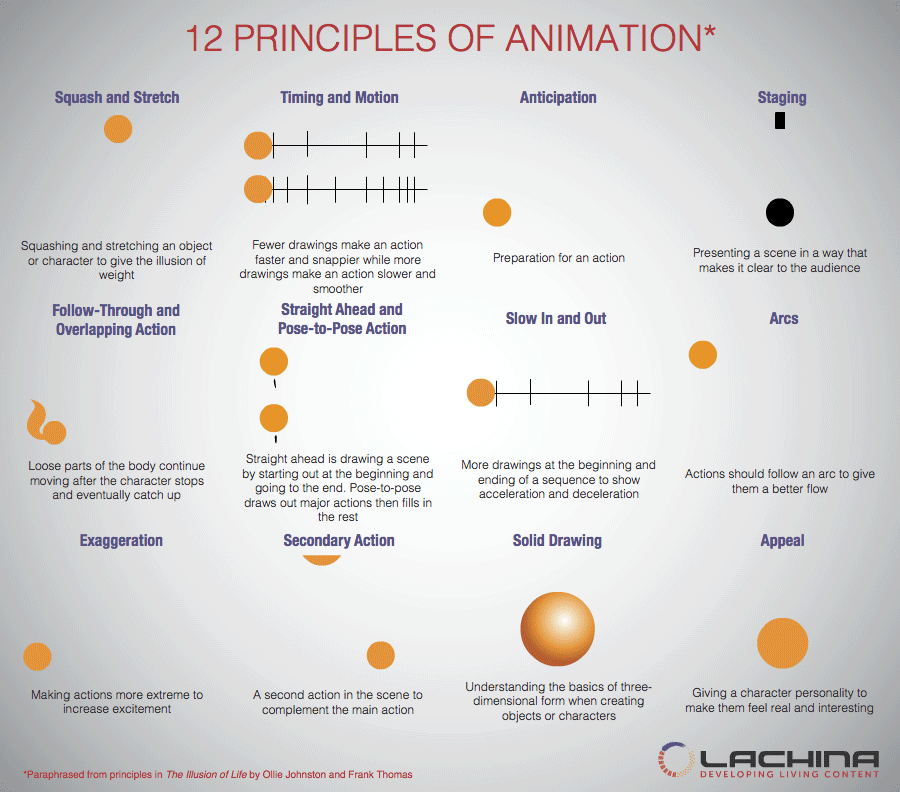
Week 9: The Uncanny Valley Essay. Different annotations. Presentation Tips

The reading list:
-Performing illusions/ Virtual Actor: North, Dan. Performing Illusions: Cinema, Special Effects, and the Virtual Actor. Wallflower, 2008.
-New Media. Harvard Reference: Manovich, L. (2001) 'Digital Cinema' , The Language of New Media. Cambridge MA: MIT press
-Spectacular Digital Effects: Whissel, Kristen. Spectacular Digital Effects: CGI and Contemporary Cinema. Duke University Press, 2014. DOI.org (Crossref), doi:10.1215/9780822377146.
-The Uncanny Valley IN-GAME & ANIMATION: Tinwell, A. (2014) 'Digital Cinema' , The Uncanny Valley in games and animation. London: CRC Press.
Week 10: The Uncanny Valley Through the Years & The Uncanny Valley IN-GAME & ANIMATION

The uncanny valley phenomenon was present alongside the cinema industry development, sharing and following every step made forward. One of the first examples of the “uncanny valley phenomenon” can be found in the release of “Final Fantasy” (2001), which was the first made mo-cap. Another virtual human-like character is the iconic “Hulk “(2003), directed by Ang Lee, who looked like a giant moving blob of modelling clay.
If that was not enough, we also got horrifying Hulk Dogs and the computer-generated character played by Nick Noite, who is disturbing enough to look at, in real life. Another one is the Conductor, played by Tom Hanks, in “Polar Express” (2004) by Robert Zemeckis, described as a doll, a puppet-like who did not match the emotion required in his speech. Viewers saw him as unfriendly, the harbinger of the uncanny animation.
Another example can be the fierce warrior in “Beowulf” (2007), created with the mo-cap technique, who misses some faces movements during an emotive scene, where he is supposed to feel fear but looks fearless. His character also misses the connection between eye expressions and mouth movements. The director Zemeckis used mo-cap to help actors feel better during the production, taking them out of the tyranny and the routine life of normal TV productions. The virtual actors (the characters) were defined as odd lifeless, disturbing digital avatars, because of the limitation of mo-cap at that time. The lack of facial mimicry in an animated human-like character may evoke the “uncanny” due to a perception that the character is unable to understand and empathize with others.
“The Adventures of Tintin”, by Spielberg (2011), was under too much attention for his character's abnormal facial expression, as the audience became frustrated at the evident lack of emotional expressivity from this character. So, the issues with the Tintin’s character in the movie, were if he was too human or not human at all, with his foetal face and glassy eyes became the Spielberg's Valley Doom.
In the graphic below, the evolution of CGI and special effects characters is represented. As is reflected in the graphic after humans, which is on the top, Young Tony Stark in “Iron Man 3“(2013), Grand Moff Tarkin from “Rogue One” Star Wars (2016), and the recreation of the old character in the first movie Rachel in “Blade Runner 2049” (2017).
Week 11: The impact of the Uncanny Valley effect on the perception of animated three-dimensional humanlike characters

Here is the document of the experiment link:
https://www.researchgate.net/publication/318673835_The_Impact_of_the_Uncanny_Valley_Effect_on_the_Perception_of_Animated_Three-Dimensional_Humanlike_Characters

Hypothetical graph of data that according to Mori’s theory will show the uncanny valley.
Succeed characters or fail characters?











Week 12: The Uncanny Valley Essay. Presentation








Week 13: The Uncanny Valley Essay







The Beginning of the Uncanny Valley

It is known that the Uncanny Valley is the uncomfortable feeling which viewers experience when looking at something which is meant to be human-like but is actually not. In other words, is the reaction about something that is supposed to be human-like, or represent humans, but it is definitely non-human. This can be associated with images, animations, or characters that viewers can find creepy and weird.
This thesis was first theorized by Mashiro Mori, a Japanese roboticist. Fun fact is that the denomination “roboticist” in Czech Republic means slaver (as robot means slave/servitude). M.Mori speculated about a dip in emotional response to a human-like robot, as when a robot is weirdly similar to a human in a way that it would elicit discomfort in people instead of a good response.
Key points that make something be “uncanny” by Mashiro Mori:
-
when the line between non-human and human is crossed. Example: Bicentennial Man (1990), and Inspector Gadget (1990).
-
robots with similar human’s feelings or behaviour help the character appear uncanny. Example: Power Rangers the movie (1995) and Power Rangers Turbo (1997)
-
robot’s behaviour and appearance, as in Star Kid (1997).
The Uncanny phenomenon was studied by many other philosophers like Jentsch and Freud. Jentsch stated ``the experience of the uncanny, as the viewer cannot decide whether the object is real or unreal or animate or inanimate’’. ``The subject of the Uncanny is a province of this kind” said Freud, who claimed that at some point in their life, everyone had to experience the uncanny valley, even just with a doll. At that time, the Uncanny phenomenon was unclear for him but, on the other hand, way far in the future, the 3D artist Alan Warburton (2017) brought his ideas about the uncanny disappearance, believing the human being had already beaten the Uncanny Valley phenomenon.
CGI (Computer Generated Imagery), used by 3D artists, was born around 50 years ago but it was refined just between 1990 and 2017.During this period the technological advancement made it possible to create dinosaurs, alien invasions, war’s machines, like the T-800, followed by spiderman, etc. The question is: what has made all this possible? Easy. The people behind computers, the artists. The software invented, and the following updates, make possible to create those characters and are the perfect toolkit for the production and development of natural motion and photoreal imaginary. In addition, the mo-cap technology improves and refines the job for the CGI team to create and overcome the Uncanny Valley.
How to catch the Uncanny Valley in movies and viewers’ affinity
How to detect the “Uncanny valley” image/ character:
-
when it is not totally real, as the character has something that is not completely right, that makes you feel “uncanny”.
-
the facial features are not in the places they should be. For example, we can notice this mainly in cartoons, like in the last cartoon movie “The Adventures of Tintin” by Spielberg, where, even using the most advanced technique, the viewers were not really happy with the result, feeling uncomfortable with the main character Tintin as he is represented with a foetal face.
-
a glossy look on the face and skin. It can be appreciated most in the eyes. An example can be found again in the above-mentioned Spielberg's movie, where the virtual actor, Tintin, looks like a doll.
-
a particularly blocky face, body or weird moves, which do not follow human’s movements.
A character or image may look “uncanny” but, if there is a theory that supports and explains the reason why it looks like that, our uncanny perception may change, as in “Total Recall” (1990) with the leader of the Mars resistance, Kuato.
How the uncanny valley is related to CGI and special effects
To start off, people are built to make sense of their surroundings. That is why when they see something resembling a human face, it freaks them out. The uncanny valley can be seen in CGI characters that look too creepy, or more simply wrongly made. This happens because in the process of creating a CGI with the purpose of making it look realistic, either more life-like or human-like, something goes wrong. In fact, CGI images or character’s creators do not always reach this goal as the audience, able to differentiate a human-being from CGI’s character, would not like a too realistically weird non-human character.
Since the beginning of CGI and special effects, the uncanny phenomenon has been walking with them. Technology will never stop trying to push realism to its limit until, at some point, we will not notice any difference. CGI is particularly related to the “uncanny valley” concept, and for this reason it is something that artists, directors and producers need to pay more attention to. Furthermore, directors, when filming a movie full of special effects and CGIs characters, should know that the viewers will be walking on a thin line that, if crossed, may give them the feeling of the uncanny, bringing them to a strange place where things look almost real but not quite.
The 90s are the golden age where the most famous blockbusters were made. Directors as Spielberg, George Lucas, James Cameron came with the amazing idea of new and different worlds, changing the cinema industry and the way of making movies. This thanks to special effects, also supported by CGIs, which were the pilar of the 90’s movies. Not to forget that most of the characters made with special effects were effectively real dolls or models.
Stant Winston, a fantastic and brilliant special effects artist, has been working in the biggest blockbuster in Hollywood movies, he took the impossible and made it possible, creating monsters that look real and alive. Furthermore, he has collaborated with the most talented directors creating characters like T- 800 and T-1000 in “Terminator 2” with James Cameron, “Aliens” with Ridley Scott and J. Cameron, the T-Rex, and many other dinosaurs, in “Jurassic Park”, with Spielberg. To sum up, special effects, if in the right hands, are really efficient in most of the case, making objects looking alive at the point where actors are able to interact with them (e.g., dolls), making it easier for them and also making a big difference for the audience, as it can get emotionally attached to those characters.
Year after year the range of CGI frames required for the new productions kept rising, the special effects, in most of the movies like “Blade” (1998), were good enough for being in the 90s when the technology wasn’t that developed as it is today. Special effects found an easy use in Horror movies, as they fit perfectly the purpose of creating fear and also the “uncanny” feeling is sometimes used as a resource to help make certain characters look like antagonists or monsters.
The following years were full of more innovative and complex ideas that found CGI a better fit rather than special effects, even if more expensive.
Movies like “Titanic”, “Waterworld”, “Power Rangers”, “Independence Day”, were a really good investment. After “Titanic,” one of the most expensive movies in the last century, everything changed and the most famous directors were looking for this kind of blockbusters, turning everything into a technological competition, making every Visual effect/CGI Studio in the world, looking for a better technology to take the best shot to make the movie become the next blockbuster in the box office. Based on these facts, you can then imagine the charts of the cinema industry costs rising. Studios were making more money from Sci-Fi movies and consequently their budget, to spend on more advanced technology like mo-cap, 3D and stop-motion, kept increasing.
The uncanny valley phenomenon was present alongside the cinema industry development, sharing and following every step made forward. One of the first examples of the “uncanny valley phenomenon” can be found in the release of “Final Fantasy” (2001), which was the first made mo-cap. Another virtual human-like character is the iconic “Hulk “(2003), directed by Ang Lee, who looked like a giant moving blob of modelling clay.
If that was not enough, we also got horrifying Hulk Dogs and the computer-generated character played by Nick Noite, who is disturbing enough to look at, in real life. Another one is the Conductor, played by Tom Hanks, in “Polar Express” (2004) by Robert Zemeckis, described as a doll, a puppet-like who did not match the emotion required in his speech. Viewers saw him as unfriendly, the harbinger of the uncanny animation.
Another example can be the fierce warrior in “Beowulf” (2007), created with the mo-cap technique, who misses some faces movements during an emotive scene, where he is supposed to feel fear but looks fearless. His character also misses the connection between eye expressions and mouth movements. The director Zemeckis used mo-cap to help actors feel better during the production, taking them out of the tyranny and the routine life of normal TV productions. The virtual actors (the characters) were defined as odd lifeless, disturbing digital avatars, because of the limitation of mo-cap at that time. The lack of facial mimicry in an animated human-like character may evoke the “uncanny” due to a perception that the character is unable to understand and empathize with others.
“The Adventures of Tintin”, by Spielberg (2011), was under too much attention for his character's abnormal facial expression, as the audience became frustrated at the evident lack of emotional expressivity from this character. So, the issues with the Tintin’s character in the movie, were if he was too human or not human at all, with his foetal face and glassy eyes became the Spielberg's Valley Doom.
In the graphic below, the evolution of CGI and special effects characters is represented. As is reflected in the graphic after humans, which is on the top, Young Tony Stark in “Iron Man 3“(2013), Grand Moff Tarkin from “Rogue One” Star Wars (2016), and the recreation of the old character in the first movie Rachel in “Blade Runner 2049” (2017).
Graphic 1: the evolution of the Uncanny Valley Through the years.

The evolution of the Uncanny Valley followed by CGI and photorealism
It is believed that computer graphics has conquered and beaten the Uncanny Valley phenomenon. Software and computers, after decades of innovation, can come out with everything. Proof of this is the great CGI job done in the last Marvel movies, like “Infinity War” (2018) and “End Game” (2019).
The progress never stops, different software and methods are now being used, like in “Mandalorian” by Disney and Lucasfilm, where Unreal Engine and the real-time projection of the environment helped creating, with visual effects, the scene in real time, while acting.
Alan Warburton said that now the studios have arrived at the frontier where anything can be simulated, and the “Uncanny Valley” can be left behind. If it is true or not, I am not in the place to disagree with him, as a consumer of CGI and future user of CGI’s software. The biggest studios know that the audience will be unsatisfied if they do not keep providing new contents, at least, every year. The challenge for the big studios is to increase the volume, the scale, speed, frequency, and density of the effects. Take “Avengers, End Game”, where an army of visual artists, working from many different places around the world, has created the characters in the movie, each one focused on a specific point of the same virtual actor. Some examples can be Thanos and Rocket, the racoon, first known in “Guardians of the Galaxy” (2014) and even better, Groot, the half tree and half humanoid, which the viewers totally fell in love with. (Find the images of these characters in the scheme above)
To conclude, the Uncanny Valley phenomenon seems to have come to an end, as all those artists, followers, and viewers believe that the new characters that studios like ILM, IMG, Disney, Marvel have created for us and with us, reflect what people need to see and feel. Believe it or no, the most powerful opinion at the end is the viewer’s opinion.
Reference:
Lay, Stephanie. «Uncanny Valley: Why We Find Human-like Robots and Dolls so Creepy | Stephanie Lay». The Guardian, 13 de noviembre de 2015. www.theguardian.com, https://www.theguardian.com/commentisfree/2015/nov/13/robots-human-uncanny-valley. (Accessed 13 December 2020).
HuffPost is now a part of Verizon Media. https://consent.yahoo.com/v2/collectConsent?sessionId=1_cc-session_9a05bc24-c543-4a03-8f27-a401b71e8355. (Accessed 2 December 2021.)
Postgate, J. P. «More Uncanny Thirteens». The Classical Review, vol. 20, n.o 9, December de 1906, pp. 443-443. DOI.org (Crossref), doi:10.1017/S0009840X00995283. (Accessed 2 December 2020).
Mashiro, M. (Translated) Karl,F, M, and Norri K . (2012) 'The Uncanny Valley', IEEE Robotics & Automation Magazine, pp. 98–100. (Accessed 1 December 2020).
What Is The Uncanny Valley? | Mashable Explains - YouTube. https://www.youtube.com/watch?v=aYuBDkto2Vk&ab_channel=Mashable. (Accessed 1 December 2020).
The Best and Worst of the Uncanny Valley and CG Movie Characters - IGN. www.ign.com, https://www.ign.com/articles/2019/02/14/the-best-and-worst-of-the-uncanny-valley-and-cg-movie-characters. (Accessed 23 December 2020).
«Explore the “Uncanny Valley” Through the World of Special Effects!» Ever Widening Circles, 12 de Agosto de 2019, https://everwideningcircles.com/2019/08/12/uncanny-valley-special-effects/.(Accessed 23 December 2020).
«7 Films That Got Stuck In The Uncanny Valley». Topless Robot, 14 de marzo de 2011, https://www.toplessrobot.com/2011/03/7_films_that_got_stuck_in_the_uncanny_valley.php. (Accessed 23 December 2020).
Scientific American (2013) Why Are Life-Like Robots Creepy? Available at: https://www.youtube.com/watch?v=bAPpQenRRAc&feature=emb_logo (Accessed 23 December 2020).
Settembre, Amelia. «How Deep Is Uncanny Valley?» Medium, 2 de noviembre de 2019, https://medium.com/@amesett/how-deep-is-uncanny-valley-15a0ff2dfe5.
Harvard Reference: Manovich, L. (2001) 'Digital Cinema' ,The Language of New Media. Cambridge MA: MIT press. (Accessed 25 December 2020).
Tinwell, A. (2014) 'Digital Cinema' ,The Uncanny Valley in games and animation. London: CRC Press. (Accessed 26 December 2020).
Hulk: Technical behind - YouTube. https://www.youtube.com/watch?v=Rxwt9kmhPHM&ab_channel=aditiadi.
«Hulk» (2003) Visual Effects by ILM, «The Lowdown» - YouTube. https://www.youtube.com/watch?v=L7-iL6AS-5Y&ab_channel=ToddVaziri. (Accessed 26 December 2020).
Brendon. «In Defense of Ang Lee’s 2003 ‘Hulk’». Medium, 5 de agosto de 2019, https://medium.com/humungus/in-defense-of-ang-lees-2003-hulk-8a603d984d6.
Warburton, A. (2017) Goodbye Uncanny Valley. Available at: https://alanwarburton.co.uk/goodbye-uncanny-valley (Accessed 26 December 2020).
Grage, P. (2014) Inside VFX :An Insider's View Into The Visual Effects And Film Business. South Carolina. CreateSpace (read 1 November 2020).